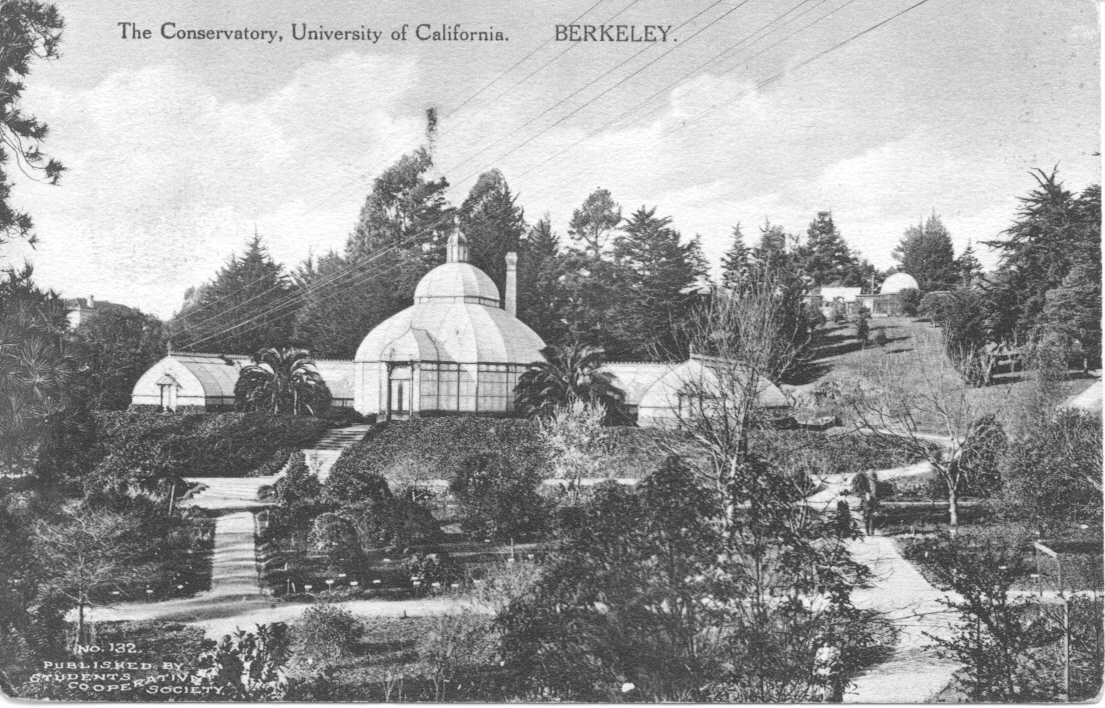
At the center of the original UC Botanical Garden was a large glass and steel conservatory. Built in 1894 by Lord and Burnham at a cost of $16,000, the conservatory was modeled after the London Crystal Palace. It was the result of a 1880s campaign by agriculture professor Eugene Hilgard, who lobbied the UC Regents for its construction and was closely involved in its planning. Hilgard, regarded as the father of soil science, even traveled to Europe in 1893, delaying work on the project while he inspected prominent conservatories across the continent.
The main part of the conservatory housed palm trees, and the wings included a cellar, potting shed, and a boiler room. In 1924, as part of the campus’s expansion, including the construction of Haviland Hall, the botanical garden was relocated and the conservatory torn down. The site of the conservatory eventually became a parking lot. In 2005, in anticipation of the construction of the Tien Center, anthropology students excavated the site. Findings included thermometer fragments, flower pots of various sizes, plant tags, glass droppers, a watch-chain loop, a number of marbles, an antique brass button featuring a bas-relief of Minerva from the Great Seal of California, and a 116-year-old dime, minted just 18 years after the campus opened its doors.
